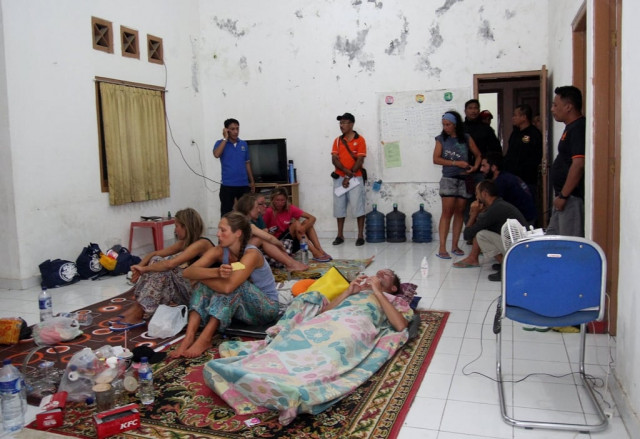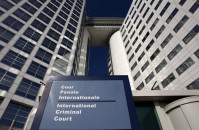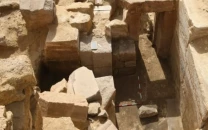Thirteen rescued two days after Indonesia tourist boat sinks
Some of the group rescued had to swim hours to the closest island even though a volcano erupting on it at the time

The rescue brought to 23 the number of people saved since the vessel sank Saturday as it headed from Lombok island to Komodo island, famed as the home of the Komodo dragon, the world's biggest lizard.
Among them were 18 foreign tourists, from New Zealand, Britain, Spain, the Netherlands, Germany, France and Italy. Some of the group rescued Sunday had to swim hours to the closest island, Sangeang, even though there was a volcano erupting on it at the time.
Two foreigners remain missing. Those rescued Monday were found in the early hours some 100 kilometres off the coast of Sumbawa island, which is close to Sangeang, a search official said.
"They were all found together, some in a lifeboat and some floating with their life jackets on around 100 kilometres off Sape," on the east of Sumbawa, said rescue official Budiawan, who like many Indonesians goes by one name.
Budiawan, head of the search and rescue agency on Lombok island which lies to the west of Sumbawa, said they were now in the town of Sape.
"The search operation is continuing this morning, and involves the military and police," he said.
The foreigners rescued Monday were from the Netherlands, Italy and Germany, while the Indonesians were four boat crew members and a tour guide, said national disaster agency spokesperson Sutopo Purwo Nugroho.
An AFP journalist in Sape saw some of those rescued being treated at a community health centre, with several put on drips. They appeared in shock and declined to speak with journalists.
French survivor Bertrand Homassel told AFP Sunday how and he and a group of others had to swim for six hours to reach Sangeang as the vessel slowly foundered, as only a small number could fit in the single lifeboat on board.
He said the boat started sinking after being hit by a storm on Friday night, which damaged the hull.
"Six people were in the lifeboat. The others climbed onto the roof of the boat, which had not completely sunk," he said, speaking from a hotel in Bima, a city on Sumbawa where those rescued Sunday were taken.
"We waited until midday on Saturday. We were five kilometres from the coast -- there were many big waves separating us from the coast.
"People started to panic... Everyone took the decision to swim to the closest island, five kilometres away, where there was an erupting volcano."
He said they arrived in Sangeang as the sun was setting, but found it deserted. They spent Saturday night there, surviving by drinking their own urine and eating leaves.
On Sunday, they attracted the attention of a passing boat by waving their life jackets, and were rescued and taken to Bima, he said.
"I was really very lucky," Homassel added.
Komodo island is one of several islands that make up the Komodo National Park, a protected area.
Its eponymous lizards can grow up to three metres (10 feet) long and have a venomous bite.
Indonesia relies heavily on boats to connect its more than 17,000 islands, but has a poor maritime safety record.
Two vessels sank last month in different parts of the archipelago as millions travelled for the Muslim Eid holiday, leaving at least 36 people dead.
Fatal incidents involving asylum-seeker vessels trying to make the treacherous sea crossing from Indonesia to Australia are also common.
But boat sinkings involving foreign tourists are rare, with accidents in Indonesia's fast-growing aviation sector more of a danger for overseas visitors in recent years.



















COMMENTS
Comments are moderated and generally will be posted if they are on-topic and not abusive.
For more information, please see our Comments FAQ